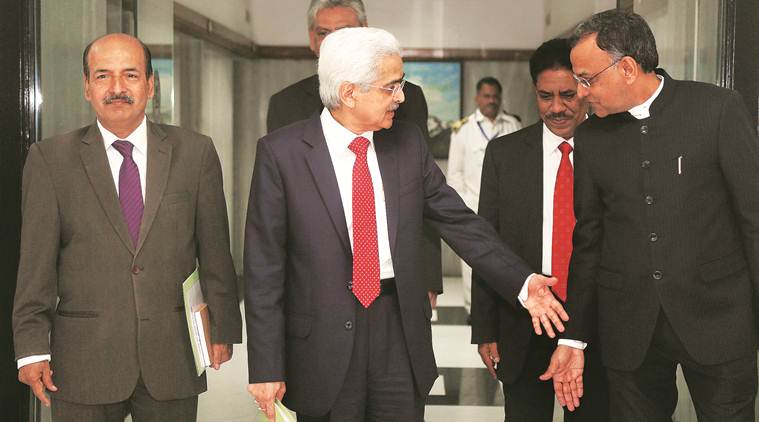The RBI annual report mentioned that fraud cases reported by banks saw a jump of 15 per cent year-on-year basis in 2018-19, with the amount involved increasing by 73.8 per cent in the current financial year.
Following Reserve Bank of India’s record transfer of Rs 1.76 lakh crore to the government, the central bank’s contingency fund, useful in fighting any exigency, has dipped to Rs 1.96 lakh crore as of June 30, according to RBI’s annual report for FY19.
After the payout to the government, “the balance in the contingency fund as of June 30, 2019, was Rs 1,96,344 crore compared to Rs 2,32,108 crore as of June 30, 2018,” the annual report said.
RBI’s contingency fund plunges after record payout
The RBI’s transfer of Rs 1,76,501 crore to the government comprised of Rs 1,23,414 crore of surplus for the year 2018-19 and Rs 52,637 crore of excess provisions identified as per the revised Economic Capital Framework (ECF) adopted at the meeting of the Central Board on Monday. The transferred amount is over three times the five-year average of Rs 53,000 crore.
The annual report says the RBI computed exchange gains/losses using the weighted average cost method resulting in an impact of Rs 21,464 crore. It also said income from domestic sources increased 132.07 per cent to Rs 1,18,078 crore from Rs 50,880 crore in the previous fiscal.
Giving reasons behind the increase in income, RBI said it was due to rise in the portfolio of rupee securities, net income on interest under liquidity adjustment facility and also write back of excess risk provision from the contingency fund.
Credit flow from NBFCs dips
In its report, the Reserve Bank of India said a lack of domestic demand was ailing the animal spirits and there was a need to focus on reviving private investments.
The central banking institution also mentioned that post the IL&FS crisis, credit flow from non-banking financial companies (NBFCs) to the commercial sector has dipped 20 per cent. The country has been facing a liquidity crunch on account of the crisis in the NBFC sector that is acting as a hurdle for private investment.
Bank fraud cases sees 15% jump in 2018-19
The RBI annual report mentioned that fraud cases reported by banks saw a jump of 15 per cent year-on-year basis in 2018-19, with the amount involved increasing by 73.8 per cent in the current financial year. In FY19, banking sector reported 6,801 frauds involving Rs 71,542.93 crore as against 5,916 cases involving Rs 41,167.04 crore reported in 2017-18.
Public sector banks have accounted for the bulk of frauds reported in 2018-19. According to the report, state-run banks reported 3,766 cases of frauds worth Rs 64,509.43 crore as against 2,885 cases involving Rs 38,260.8 crore.
Interestingly, frauds relating to card/internet and deposits constituted only 0.3 per cent of the total value of frauds in 2018-19. Cheating and forgery was the major component, followed by misappropriation and criminal breach of trust.
Reviving consumption, private investment should be priority: RBI
Underscoring that reviving consumption and private investment should be the priority for the government, the RBI in its annual report said the ongoing growth deceleration was a “soft patch mutating into a cyclical downswing”.
“The key question that confronts the economy is: are we dealing with a soft patch, or a cyclical downswing, or a structural slowdown?” the RBI, which has revised down its GDP forecast to 6.9 per cent earlier this month, said in its report.
On steps to revive growth, RBI recommended strengthening both the banking and non-banking sectors, a “big push” to infrastructure spends and implementation of structural reforms in labour laws and taxation.
The RBI has cut its key rates by 1.10 per cent in 2019 to a nine-year low of 5.4 per cent in four successive rate cuts to help revive the sagging growth.
The RBI also mentioned that factors like farm loan waivers, implementation of the seventh pay panel report and the various income support schemes were “constraining” the states’ ability to deliver fiscal stimulus. However, the “silver lining” is the macroeconomic stability, fiscal deficit being reigned in and also the low current account gap, the report said.
Source: Read Full Article

